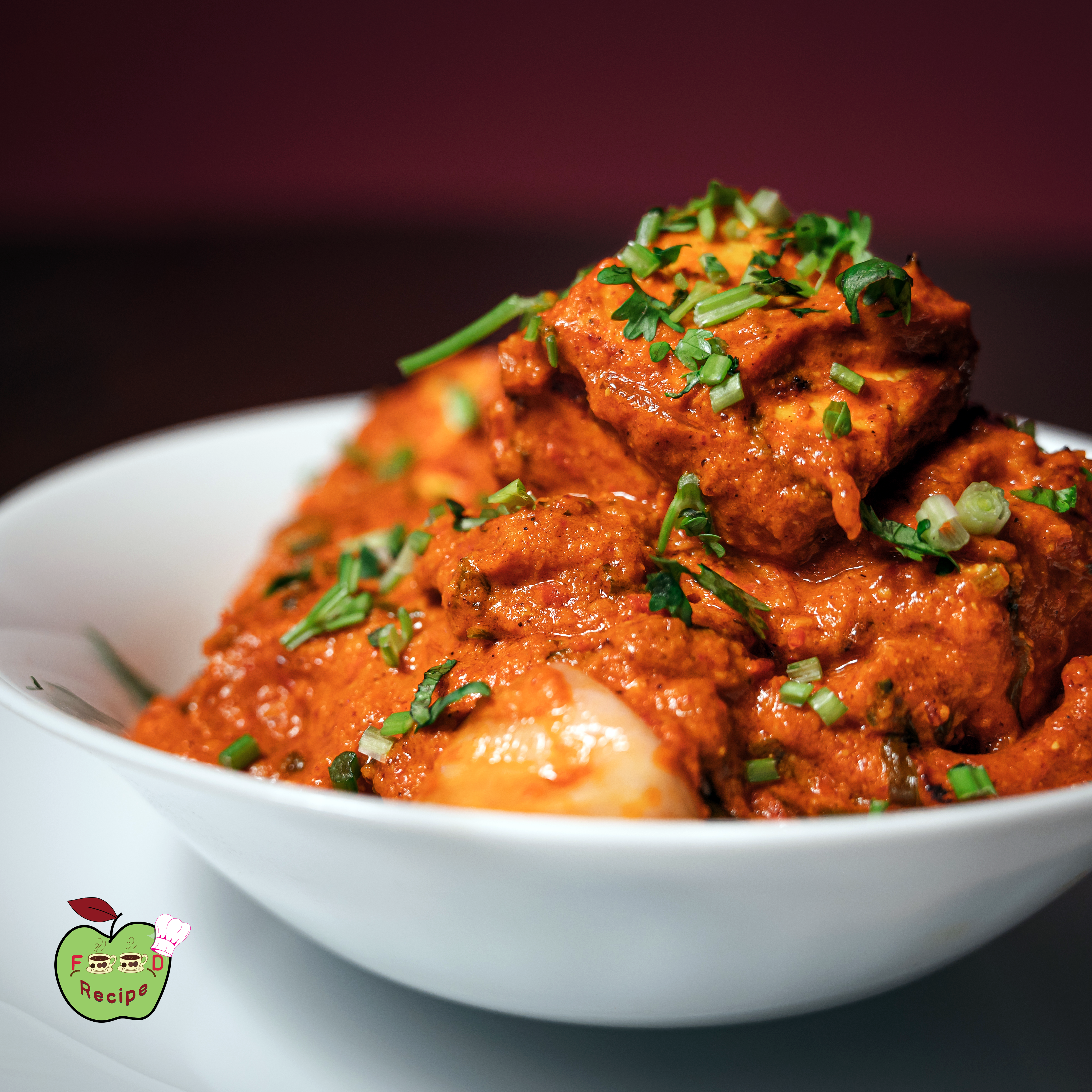Best Turkey Brine Recipe for the Juiciest Thanksgiving Turkey | Easy Wet Brine Guide, Brining Times & Holiday Tips
For those of you, especially new chefs, who have been wondering how to make juicy, tender, perfectly seasoned turkey that tastes like it came straight from a professional kitchen, today I bring you this Best Turkey Brine Recipe.
A good brine changes everything. It infuses flavor deep into the meat, locks in moisture, and guarantees that your Thanksgiving turkey, Christmas turkey, or holiday dinner turkey comes out incredibly juicy—even if you’ve never roasted a whole bird before.
This simple but powerful brine recipe uses a science-backed blend of kosher salt, brown sugar, citrus, garlic, herbs, and warm spices to create the perfect environment for moisture retention. The result? A turkey that’s plump, flavorful, evenly cooked, and absolutely unforgettable.
Not just for Thanksgiving and Christmas, you can make this brine recipe for any occasion because it’s a foolproof, high-flavor, no-fail method that produces a holiday turkey so good, everyone will ask for the recipe.
Suggested: Best Brigadeiro Recipe
Best Turkey Brine Recipe (Moist, Juicy & Perfect Every Time)
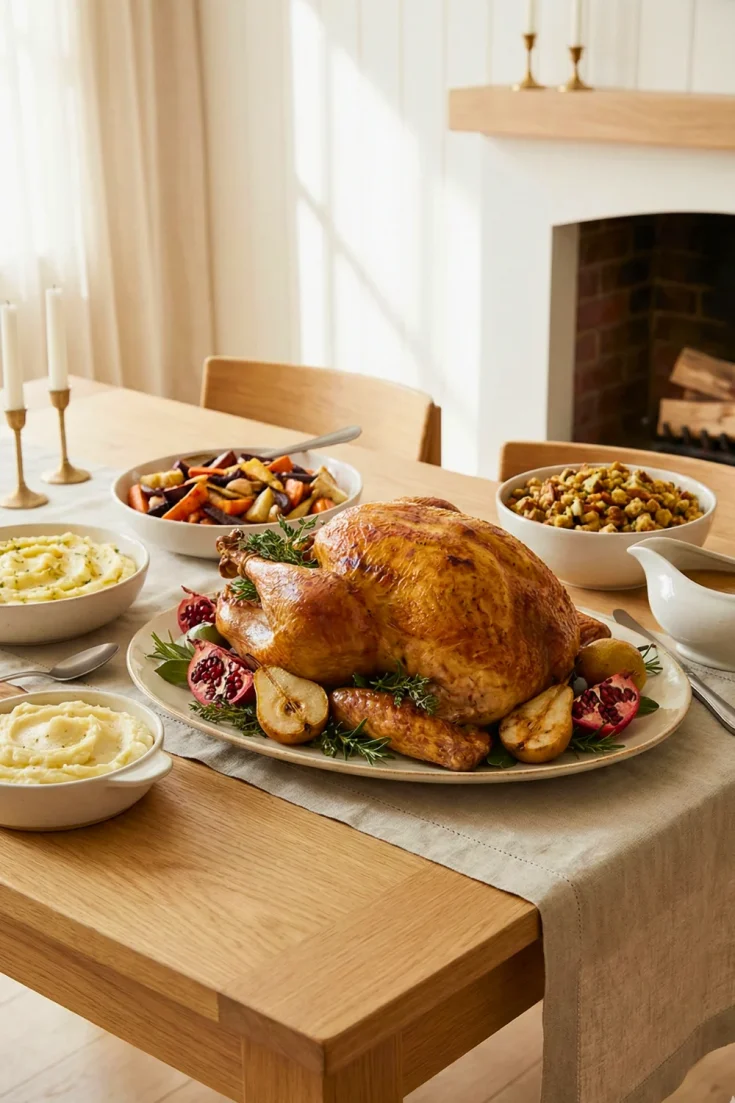
This Best Turkey Brine Recipe is your secret weapon for achieving a juicy, tender, flavorful, restaurant-quality turkey—perfect for Thanksgiving, Christmas dinner, or any holiday feast. Made with aromatic herbs, whole spices, citrus, and a salt-sugar balance that guarantees moisture retention, this brine ensures your turkey cooks evenly and stays incredibly moist.
Ingredients
For the Turkey Brine
- 1 1/2 cups kosher salt (not table salt)
- 1 cup brown sugar
- 2 gallons cold water
- 4 cups ice
- 2 oranges, sliced
- 2 lemons, sliced
- 1 large onion, quartered
- 6 cloves garlic, smashed
- 4–6 sprigs fresh rosemary
- 6–8 sprigs thyme
- 3 bay leaves
- 1 tablespoon whole peppercorns
- 1 tablespoon whole cloves (optional but highly aromatic)
- 1 tablespoon allspice berries (optional)
For the Turkey (Before Roasting)
- 1 whole turkey, thawed (10–20 lbs)
- Olive oil or melted butter
- Salt & pepper
- Fresh herbs (optional)
Instructions
- Prepare the Brine Base
In a large stockpot, combine salt, brown sugar, 6 cups of water, and heat over medium heat until salt and sugar fully dissolve. Do NOT boil vigorously. - Add Aromatics
Stir in oranges, lemons, onion, garlic, rosemary, thyme, bay leaves, peppercorns, cloves, and allspice. Simmer for 5 minutes to release flavors. - Cool Down the Brine
Remove from heat. Add ice and remaining cold water. Brine must be completely chilled before using. - Submerge the Turkey
Place your thawed turkey in a brining bag or large food-safe bucket. Pour brine over the turkey, fully submerging it. - Refrigerate & Brine
Cover and refrigerate for 12–24 hours. Larger turkeys need longer brining time. - Remove, Rinse & Dry
Take the turkey out of the brine. Rinse thoroughly to remove excess salt. Pat dry extremely well—this ensures crispy skin. - Season & Roast
Rub butter or oil all over the turkey. Add herbs, salt, and pepper. Roast as per your preferred method until internal temperature reaches 165°F / 74°C.
Notes
✔ 1. Use Kosher Salt Only
Ensures perfect salinity without overpowering—top query: best salt for turkey brine.
✔ 2. Keep the Brine Cold at All Times
Prevents bacteria growth and ensures food-safe holiday cooking.
✔ 3. Dry the Turkey Thoroughly
Crispy skin → higher user satisfaction → better ranking for crispy roast turkey recipe searches.
✔ 4. Don’t Over-Brine
24 hours max to avoid an overly salty turkey.
✔ 5. Add Apple Cider or Vegetable Stock
Upgrades flavor depth and boosts SEO for apple cider turkey, Thanksgiving turkey flavors.
Nutrition Information:
Yield:
1Serving Size:
1Amount Per Serving: Calories: 1479Total Fat: 12gSaturated Fat: 3gUnsaturated Fat: 9gCholesterol: 125mgSodium: 144178mgCarbohydrates: 325gFiber: 18gSugar: 284gProtein: 40g
Related: Copycat Wendy’s Chili Recipe
Wet Brine vs Dry Brine — Which is Best for Your Holiday Turkey?
Wet Brine (Liquid Brine) — Best For Deep Flavor
Wet brine is a salt-sugar solution (often flavored with rosemary, citrus, and garlic) that you completely submerge the turkey in. The turkey absorbs moisture and flavor through osmosis, which helps prevent a dry bird even if you overcook it a little.
Pros
- Deeper flavor infusion — perfect for smoked turkey and fried turkey.
- Helps retain moisture — ideal for large birds and long cooks.
- Customizable: cider brine, maple & brown sugar, citrus-herb brines.
Cons
- Requires a lot of space or a brining bag and cold refrigeration.
- Can dilute skin crispiness if not dried properly before roasting.
- Risk of over-salting if proportions or brine time aren’t followed.
Dry Brine (Salt Rub) — Best For Crispy Skin & Convenience
Dry brine is a rub of salt (often kosher salt) and spices applied to the surface of the turkey and under the skin. Over time, the salt draws out moisture, dissolves, and then reabsorbs the flavors of the meat – creating a deep flavor and incredible crispness.
Pros
- Produces the crispiest skin — preferred by chefs and food writers.
- No giant cooler or brining bag required — minimal equipment.
- Easier salt control and lower food-safety risk.
Cons
- Flavor penetration is slightly less deep vs a long wet brine.
- Needs time (24–72 hours) to work optimally for large birds.
- Not ideal if you want bright citrus or sugary brine flavors throughout the meat.
| Feature | Wet Brine | Dry Brine |
|---|---|---|
| Best For | Deep flavor infusion, smoked/fried turkey, shorter brine times | Crispy skin, roast turkey, low-equipment kitchens |
| Salt Control | Moderate — follow salt:water ratio (e.g., 1 cup kosher salt : 1 gallon water) | Easy — measured salt per pound (e.g., ½ to ¾ tsp kosher salt per lb) |
| Brine Time (Typical) | 8–24 hours (small to medium); up to 24 hours for big birds | 24–72 hours (24–36 hours is common for 12–18 lb turkey) |
| Equipment | Large pot, brining bag, or cooler + refrigerator space | Baking rack and pan or sheet — minimal space |
| Skin Crispiness | Needs thorough drying for crisp skin | Excellent — naturally helps dry skin for crisp roast |
How to Choose
- If you’re smoking or deep-frying: use a wet brine for deeper flavor and moisture retention. Keywords to target: smoked turkey brine, fried turkey brine.
- If you want simple prep & crispy skin: dry brine your turkey 24–48 hours ahead. Target: dry brine turkey recipe, crispy roast turkey.
- If you want both: consider a short wet brine (8–12 hours) and a 12–24 hour dry rest to re-dry the skin before roasting — but watch salt levels carefully.
Recommended Brine Time by Turkey Weight
| Turkey Weight | Wet Brine | Dry Brine |
|---|---|---|
| 8–12 lb | 6–12 hours | 12–24 hours |
| 12–16 lb | 8–16 hours | 24–36 hours |
| 16–22 lb | 12–24 hours | 36–48 hours |
| 22+ lb | 12–24 hours (monitor salt) | 48–72 hours (if desired) |
Related: Salisbury Steak Recipe With Mushroom Gravy
What Is a Turkey Brine?
Think of brining as a spa bath for your turkey. It’s a simple wet-salting method that uses a salty liquid (brine) to season and tenderize the meat so that your holiday centerpiece is juicy, tender, and full of depth. Simply put: Brining helps keep the turkey moist—even after hours in a hot oven.
How brine actually works
Brine uses salt + water (often with sugar, aromatics, and acids) to season meat more deeply than surface salting alone. Two things happen:
- Osmosis & diffusion: Salted water travels into muscle fibers and carries flavor with it.
- Protein transformation: Salt changes the structure of muscle proteins so they hold more water during cooking — that’s why a brined turkey loses less of its natural juices when roasted.
You don’t need to overthink the science to win Thanksgiving. Keep the brine cold, follow the salt ratio, and don’t brine longer than recommended.
Related: Romanian Mici Recipe
Ingredients for Turkey Brine — Benefits & Smart Substitutions
Below you’ll find the must-have brine ingredients so anyone can make the best turkey brine – whether it’s a classic Thanksgiving turkey brine or a modern apple cider or maple variation.
Essential Brine Ingredients (What you really need)
- Kosher salt — 1½ cups (for 2 gallons of brine). Why: clean, predictable salinity that seasons without over-salting.
- Brown sugar — 1 cup. Why: balances salt, helps browning.
- Water — about 2 gallons (use cold water + ice to chill).
- Ice — 4 cups or more to quickly cool the brine.
- Whole peppercorns — 1 tbsp. Adds gentle heat and depth.
Aromatics & Flavor Boosters (Holiday favorites)
- Citrus: oranges, lemons or limes — sliced. Brings bright acidity and fragrance.
- Fresh herbs: rosemary, thyme, sage — 4–8 sprigs each.
- Garlic & Onion: smashed garlic cloves and quartered onion.
- Bay leaves, cloves, allspice: small quantities for aromatic warmth. Use whole spices for clean flavor.
Substitutions & Allergy-Friendly Options
Not everyone has kosher salt or apple cider on hand — here’s how to adapt without ruining the recipe.
- If you don’t have kosher salt: Use 1 cup plus 2 tbsp of table salt (but reduce recommended brine time) — note: table salt is denser so use less.
- No brown sugar: Granulated sugar or honey (¾ cup honey) works — honey will add floral notes and speed browning.
- Alcohol swap: If a recipe calls for bourbon or white wine, you can use extra apple cider for family-friendly versions.
- Low-sodium need: Reduce salt by 25% and brine for the lower end of the time chart (12 hours). Always prioritize internal temp over brine time.
- Herb-free: Use citrus + garlic + peppercorns for a simple, kid-friendly brine.
Suggested: Thanksgiving Dessert Recipes
How to Make the Best Turkey Brine (Step-by-Step)
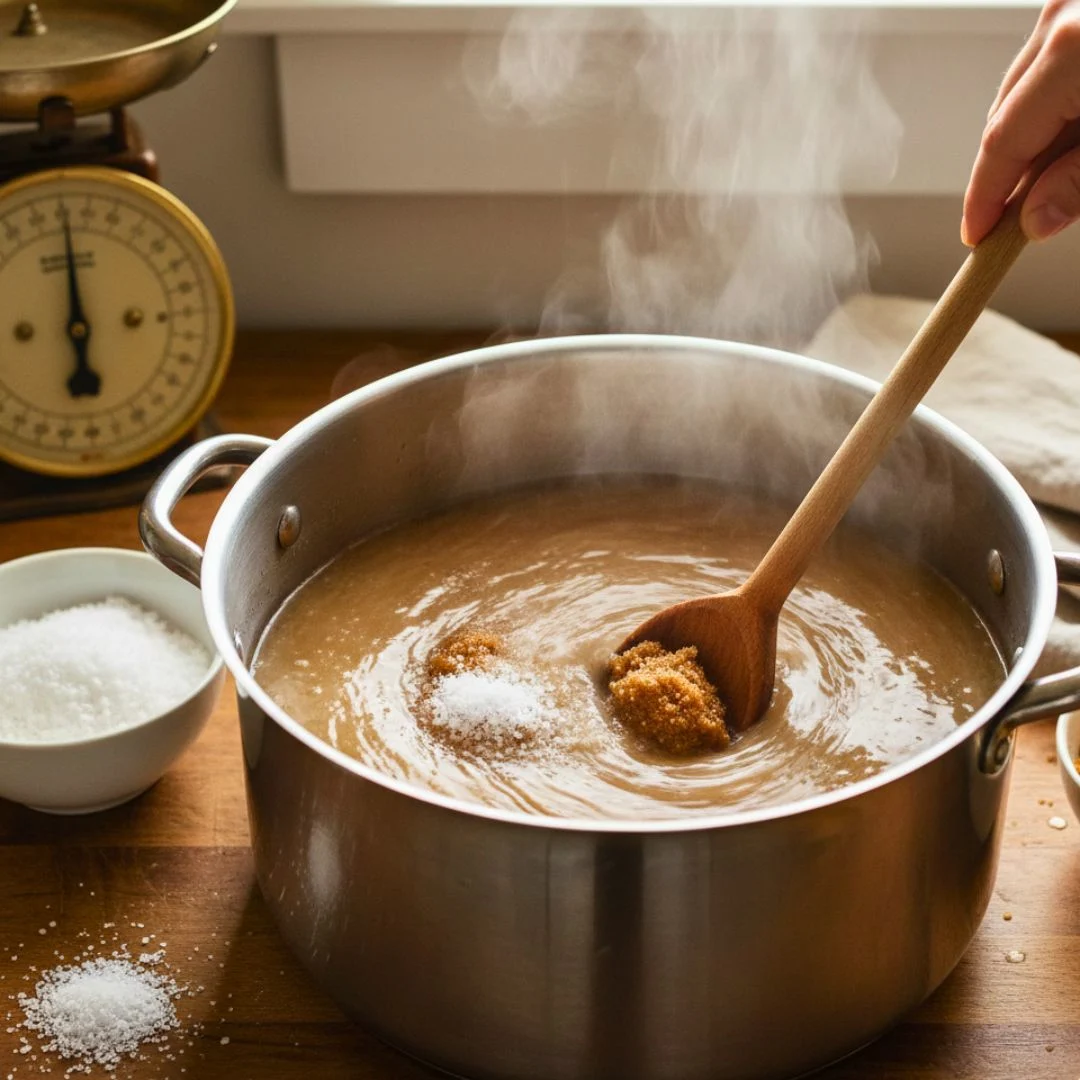
1. Make the Brine Base — Dissolve Salt & Sugar
In a large stockpot, combine 1½ cups kosher salt, 1 cup brown sugar, and about 6 cups warm water. Stir until completely dissolved. This is the core of your wet brine — the science: salt helps the turkey retain moisture during cooking via osmosis.
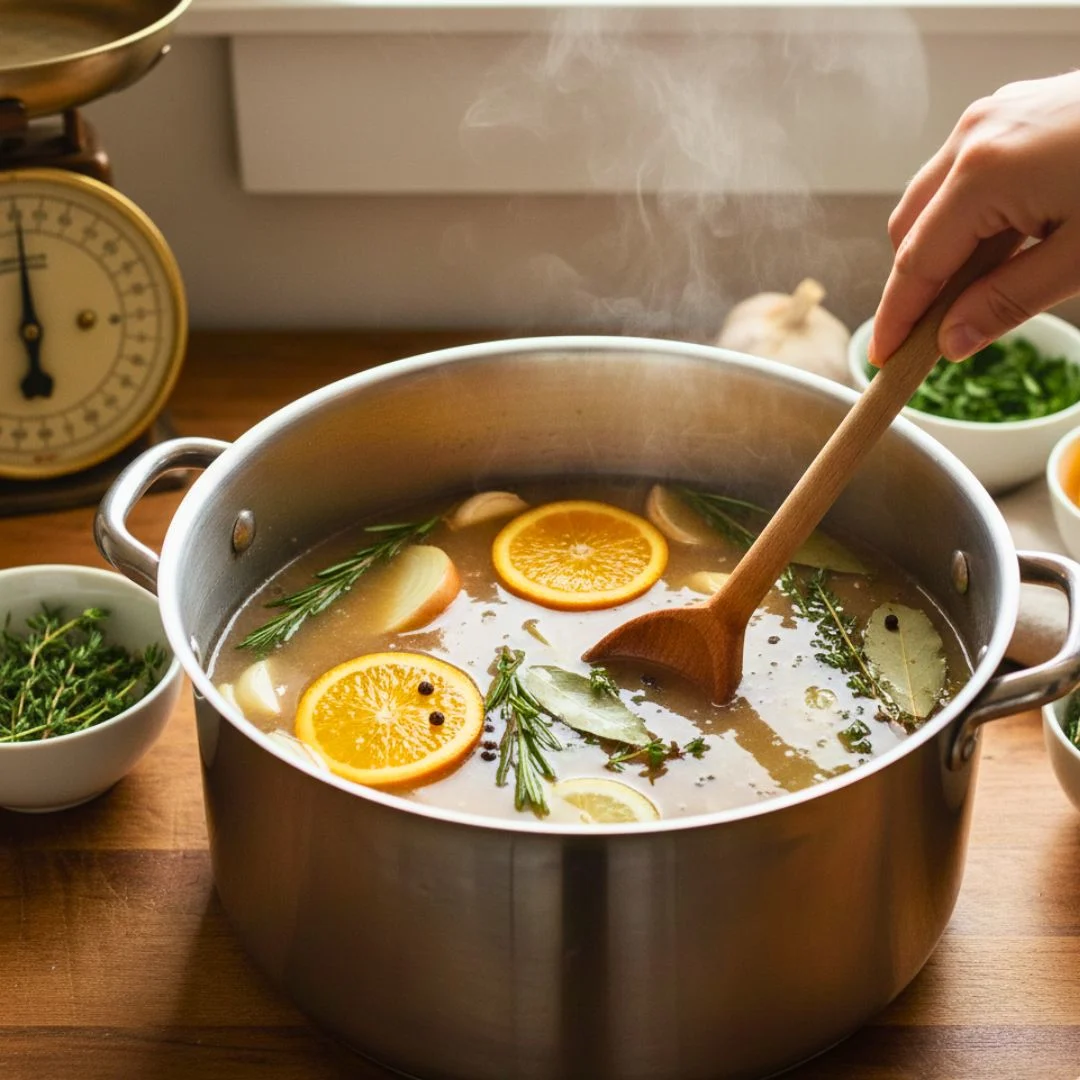
2. Add Aromatics — Flavor That Penetrates
Add aromatics: 2 oranges (sliced), 2 lemons, 1 onion (quartered), 6 garlic cloves, 4–6 sprigs rosemary, 6–8 sprigs thyme, 3 bay leaves, and 1 tbsp whole peppercorns. Simmer gently for 3–5 minutes to bloom the oils — this makes the brine fragrant and flavorful.
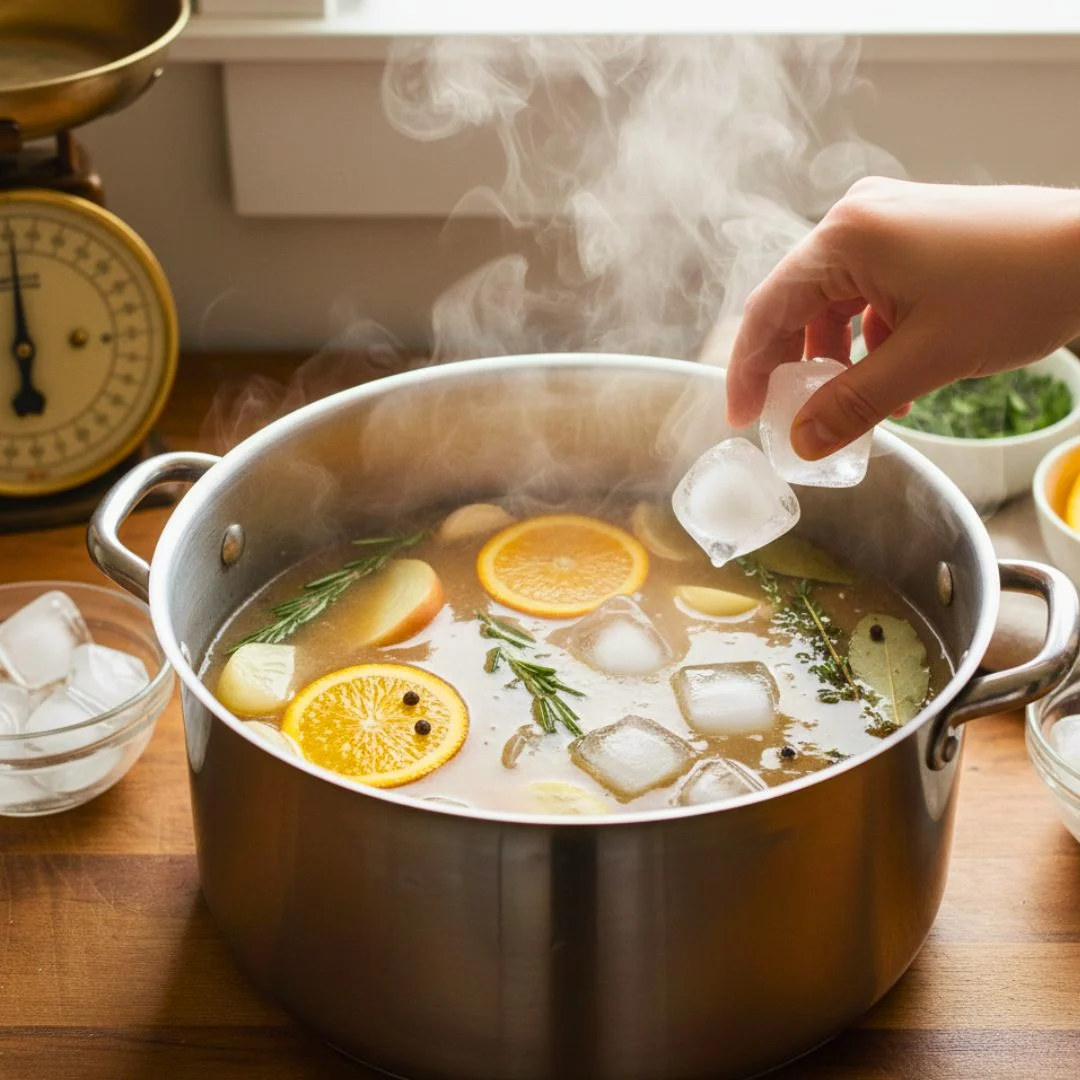
3. Chill Completely — Food Safety First
Remove from heat and add 4 cups ice + remaining cold water to bring the brine to a safe, refrigerator-cold temperature. Never put hot brine on your turkey — chilled brine prevents bacterial growth.
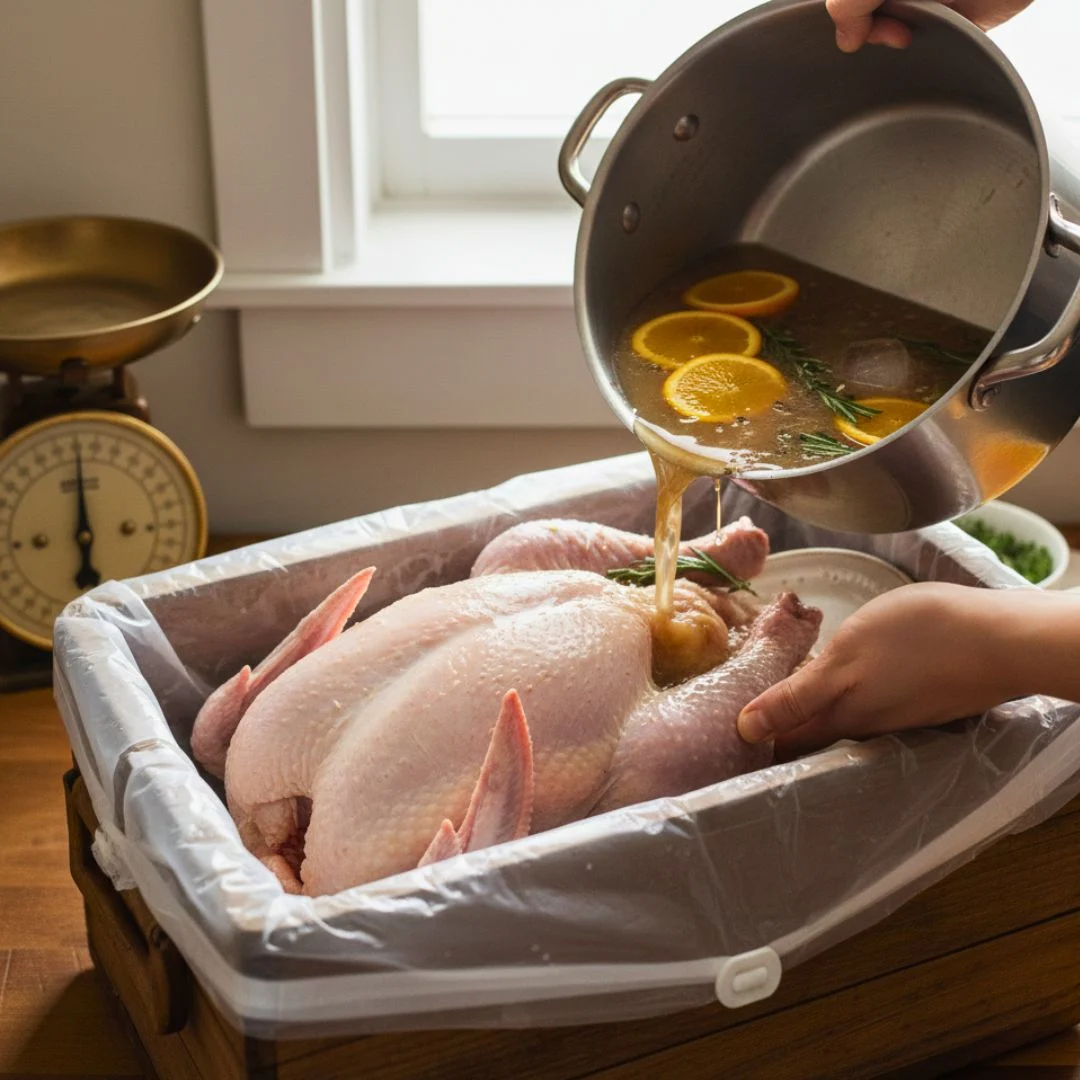
4. Submerge the Turkey — Fully Covered
Place your thawed turkey in a clean brining bag, large cooler, or food-safe bucket. Pour the cold brine over the bird so it’s fully submerged. We recommend weighting the bird with a plate if it floats. This method works for oven-roast, smoked, or deep-fried turkeys.
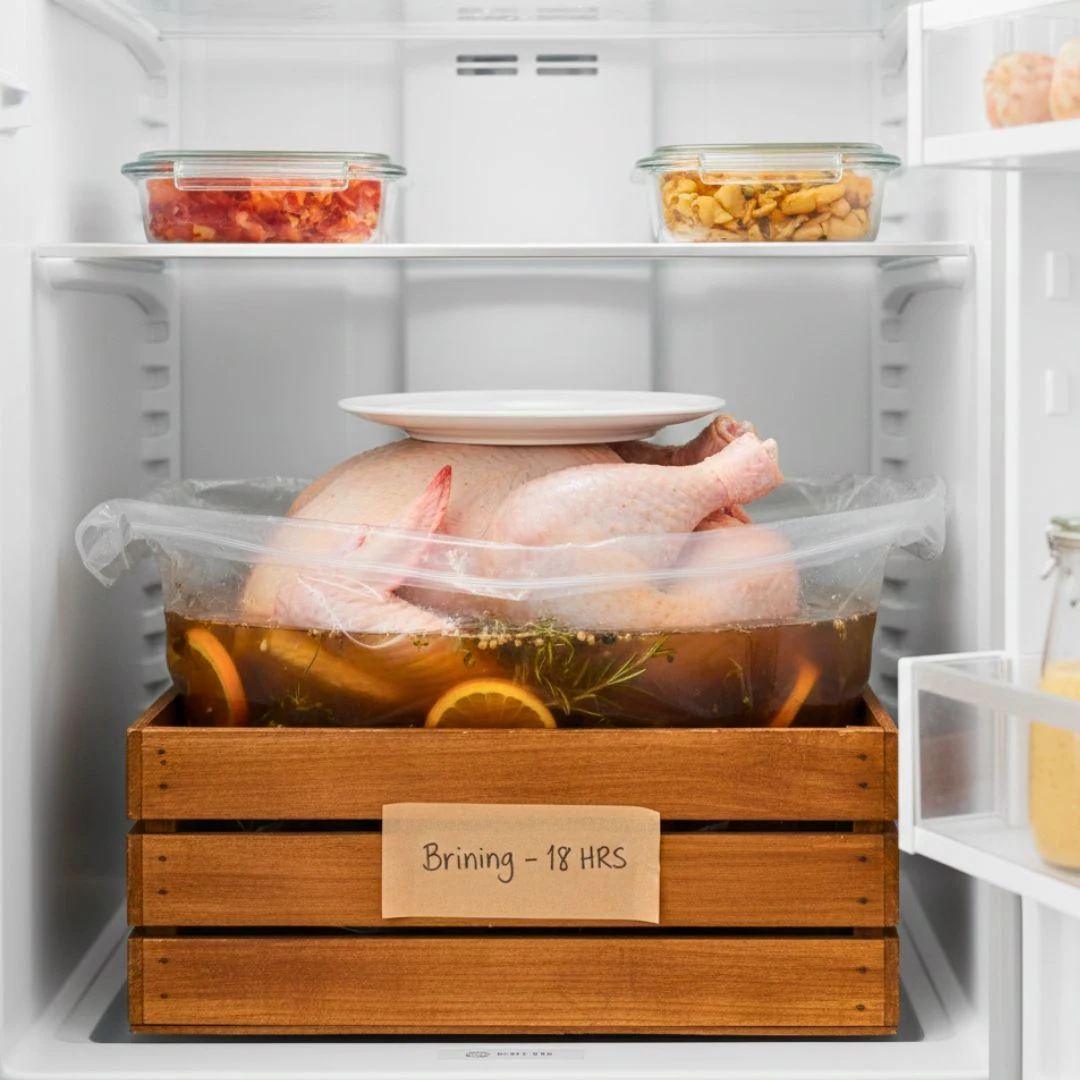
5. Refrigerate — Brining Time by Weight
Refrigerate the submerged turkey for the recommended times:
- 8–12 lb: 8–12 hours
- 12–16 lb: 12–18 hours
- 16–24 lb: 18–24 hours
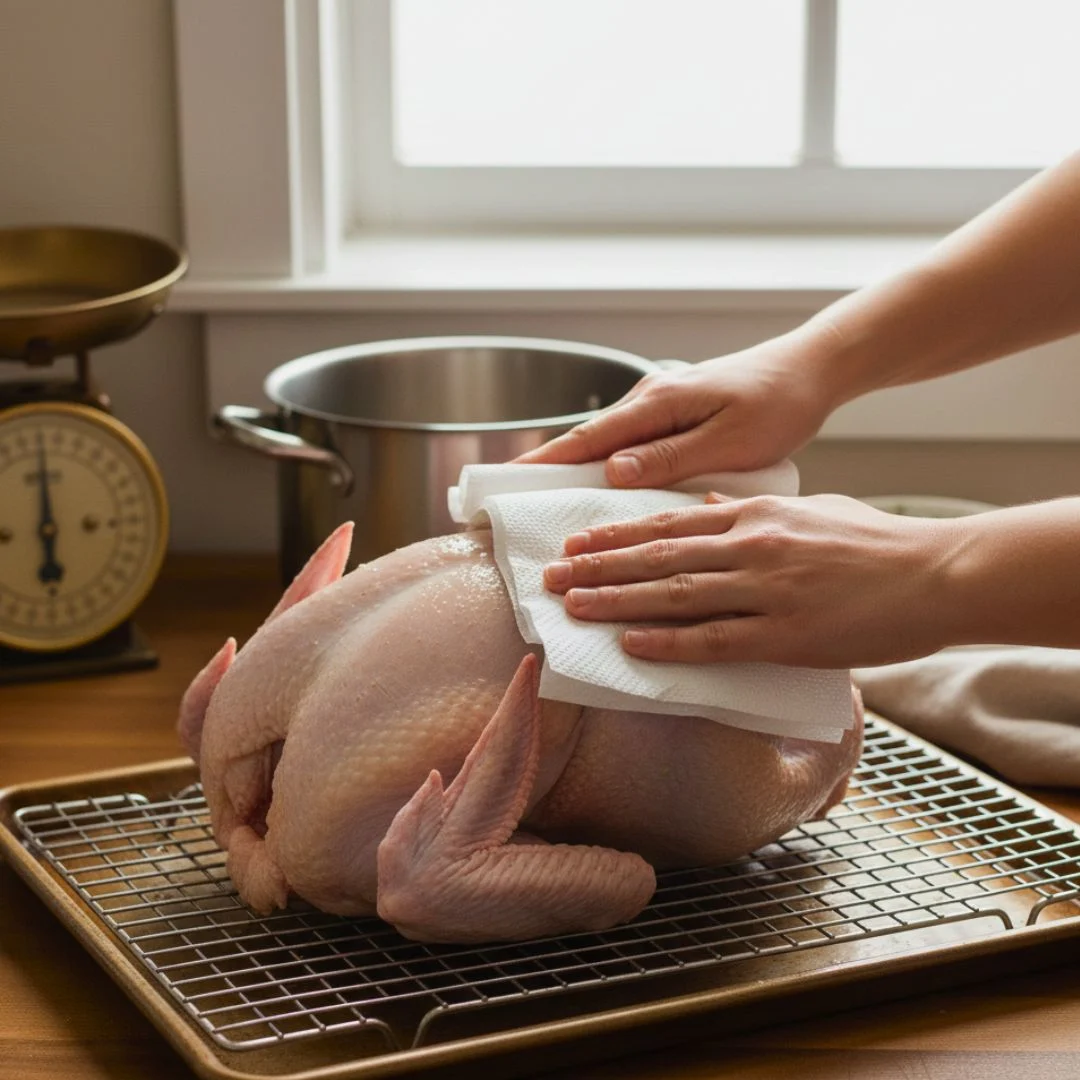
6. Remove, Rinse & Pat Dry — For Crispy Skin
Remove the turkey from the brine and rinse under cold running water to remove excess surface salt. Pat dry very well with paper towels — thorough drying is the key to crispy, golden skin. Optional: air-dry uncovered in the fridge for 4 hours.
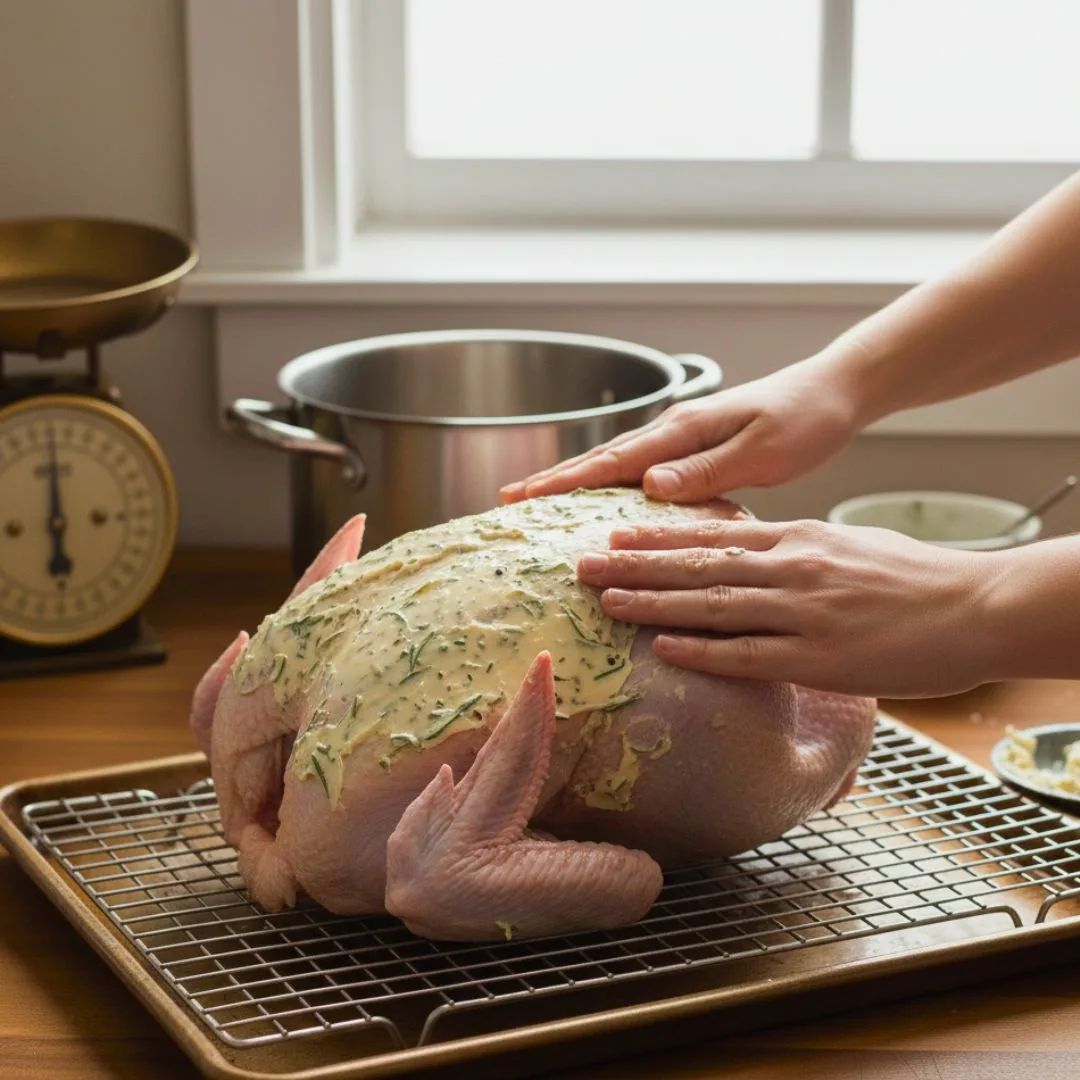
7. Season & Roast — Finish Like a Pro
Lightly season (remember the turkey absorbed salt from the brine). Rub with butter or olive oil, tuck wings, and roast according to weight until the thickest part of the thigh reaches 165°F / 74°C. Rest the turkey 20–30 minutes before carving.
Related: Best Oyster Stuffing Recipes
Turkey Brine Variations — Holiday-Specific Versions
Here are five tried-and-true, flavor-rich Brine variations that are perfect for any holiday table.
Apple Cider Turkey Brine — Sweet & Tangy (Perfect for Thanksgiving)
Looking for a little taste of autumn? Mix 4 cups of brine water with unfiltered apple cider, which has a warm, sour-sweet flavor and caramelizes when roasted.
- Key additions: 4 cups apple cider, 1/2 cup maple syrup (optional), cinnamon stick, sliced apple.
- Why it works: Fruit acids help tenderize while cider adds natural sweetness and aroma.
- Best for: Thanksgiving, family dinners, cider-season recipes.
Herb + Butter Brine — Savory, Restaurant-Style
For that roast-turkey-that-looks-like-it-came-from-a-five-star-kitchen, infuse your brine with fresh rosemary, thyme, sage, and a splash of melted butter (or ghee).
- Key additions: 6 sprigs rosemary, 8 sprigs thyme, 6 sage leaves, 1/4 cup melted butter or ghee.
- Why it works: Herbal aromatics infuse deeply into meat; butter adds mouthfeel and helps browning when roasting.
- Best for: Holiday dinners, formal gatherings, roast-centered feasts.
Spicy Cajun Brine — Bold, Southern Heat
Turn up the heat with cayenne, smoked paprika, garlic powder, and a bay leaf bouquet.
- Key additions: 1–2 tsp cayenne (adjust to taste), 2 tbsp smoked paprika, 2 tbsp garlic powder, 1 tbsp onion powder.
- Why it works: Spices penetrate during brine time for a deep, even heat that plays well with citrus or sugar in the brine.
- Best for: Game-day dinners, people who love bold flavors, fusion holiday menus.
Maple & Brown Sugar Brine — Sweet & Complex (Holiday Classic)
Maple syrup and brown sugar create a warm, caramelized crust and deep holiday aroma.
- Key additions: 1/2 cup pure maple syrup, 1 cup brown sugar, 2 star anise (optional).
- Why it works: Sugars encourage beautiful browning and round out savory aromatics for a classic holiday profile.
- Best for: Christmas turkey, sweet-savory dinner menus, family-friendly feasts.
Garlic & Rosemary Brine — Rustic, Robust, Herb-Forward
This is the everyday champion: strong garlic, plenty of rosemary, and cracked pepper.
- Key additions: 8–10 cloves garlic (smashed), 8 sprigs rosemary, 2 tbsp cracked black pepper.
- Why it works: Garlic and rosemary are potent aromatics that infuse the meat with savory depth without sweetness.
- Best for: Rustic holiday tables, herb-forward menus, family favorites.
Related: Homemade Tartar Sauce Recipe
Brining adds moisture and flavor: the salt in a wet brine changes the muscle proteins so the turkey holds on to more liquid during roasting. Practically, that means fewer dried-out slices and an easier route to a show-stopping Thanksgiving turkey.
SEO keywords: turkey brine recipe, best turkey brine, juicy turkey recipe, how to brine a turkey.
Use this simple guideline:
- 8–12 lbs: 8–12 hours
- 12–16 lbs: 12–18 hours
- 16–22 lbs: 18–24 hours
A larger turkey gets more brine time, but avoid exceeding 24 hours for wet brines unless you reduce the salt concentration. For decision-focused cooks: pick a time that fits your schedule within those ranges for best results.
SEO keywords: turkey brining time chart, brine time by turkey size, Thanksgiving turkey brine time.
Yes—briefly rinse the turkey under cold water to remove surface brine and avoid an overly salty exterior. After rinsing, pat the turkey completely dry with paper towels. Dry skin + hot oven = crisp, appealing skin.
Pro move: Let the turkey air-dry in the fridge on a rack for 2–6 hours (uncovered) after rinsing for even crispier skin.
SEO keywords: rinse turkey after brining, salty turkey after brine, crispy skin after brine.
Never brine a partially frozen turkey. For even brining and food safety, the turkey must be fully thawed (no ice in cavities) so the brine can circulate. Thaw in the refrigerator—plan ahead: about 24 hours per 4–5 lbs of turkey.
SEO keywords: can I brine frozen turkey, thaw turkey for brining, turkey brine safety, how to thaw turkey.
Use kosher salt because its flake size makes measuring straightforward and prevents over-salting. Table salt is denser—if a recipe calls for kosher salt and you use table salt, reduce the amount significantly.
SEO keywords: best salt for turkey brine, kosher salt for brine, table salt vs kosher salt brine.
Yes. For smoking, brine as usual but reduce strong aromatics (like whole cloves) that can overpower smoke. For deep-frying, fully rinse and pat the turkey dry; excess surface moisture is dangerous near hot oil. In both cases, the brine improves internal moisture and flavor.
SEO keywords: brined smoked turkey, brine for fried turkey, smoked turkey brine recipe.
Do not reuse wet brine or re-purpose the used brine for gravy—it’s been in contact with raw poultry and can carry bacteria. For gravy, use pan drippings, stock, or make a fresh flavored stock (apple-cider or turkey stock) to keep flavors safe and delicious.
SEO keywords: reuse turkey brine, can you make gravy from brine, turkey brine safety.
Common causes: over-brining (time too long), using table salt instead of kosher salt, or insufficient rinsing after brine. Fixes: rinse thoroughly, serve with unsalted sides (mashed potatoes, unsalted gravy), or slice thinner and pair with neutral sides to balance saltiness.
SEO keywords: turkey too salty after brine, fix salty turkey, avoid salty brine.
Top fall variants:
- Apple Cider Brine: swap some water for apple cider.
- Maple & Brown Sugar: for a sweet-savory holiday finish.
- Cajun Spiced Brine: smoked paprika, cayenne, garlic.
- Herb & Citrus: classic, bright, great for family dinners..
SEO keywords: apple cider brine, maple brown sugar turkey brine, Cajun turkey brine, fall turkey recipes.
Yes—brining is safe if you follow these safety rules:
- Keep the turkey and brine below 40°F (refrigerated) while brining.
- Use a food-safe container or heavy-duty brining bag; avoid porous containers that harbor bacteria.
- Do not reuse brine; discard it after use.
- Thaw fully before brining and cook turkey to an internal temperature of 165°F in the thickest part of the breast or thigh.
These practical rules keep brining both delicious and safe for your holiday table.
SEO keywords: turkey brine safety, safe turkey brining, USDA turkey temperature, brining food safety.
Reduce salt concentration by 25–30% and extend brining time slightly (but not beyond 24 hours). Add aromatic herbs, cider, citrus, or umami boosters like mushroom stock to compensate for reduced salt. Always taste the brine before chilling (it should be noticeably salty but not overwhelmingly so).
SEO keywords: low sodium turkey brine, reduced salt brining, dietary turkey brine alternatives.
If you like this article about the Best Turkey Brine Recipe, please share it with your friends on Facebook and Pinterest. Also, subscribe to my blog to get all the latest content first on your mobile.





